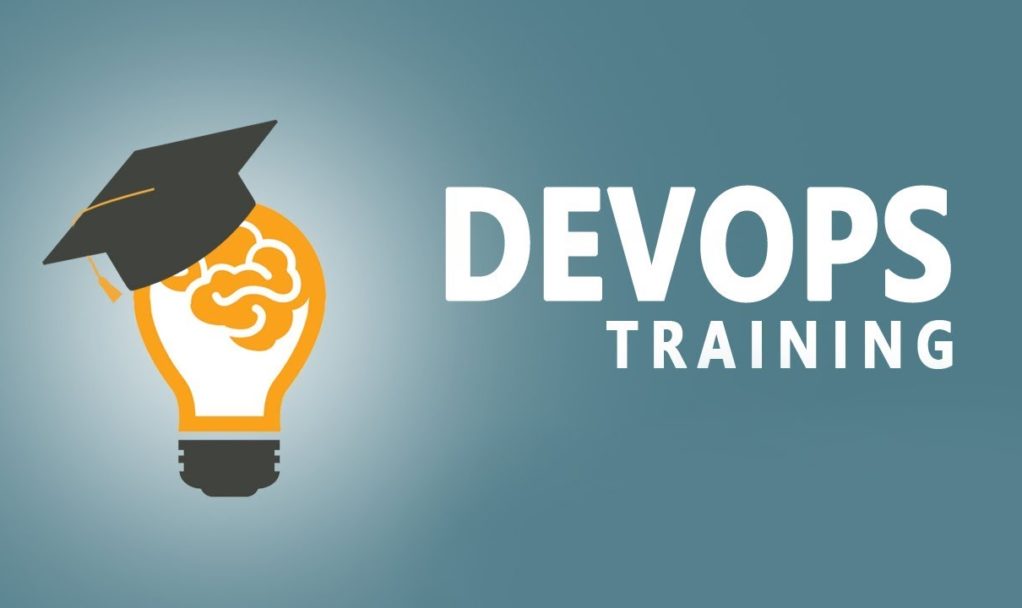Work
What Is A Career? 5 Steps That Can Help You Make The Right Career Choice


Being smart and self-driven individuals, we all want to do well for ourselves. Everyone wants to excel in his career, but what is a career?
Perhaps your ideal career is no more satisfying, and you are unable to achieve your ultimate goals. Don’t worry; we all face these moments in our careers. A change of direction, strategy and mindset can help us in the journey forward.
The desire of becoming top-performer and accomplished in our field is quite natural. Yet we often find ourselves in a fix when choosing the best way to move ahead.
Making the right choice in professional and personal life is undeniable, so we need to understand the difference between job and career.
What Is a Career?
A career implies you remain in the same sort of work for a long time. It is the way we select to fulfill our professional ambitions and goals.
Occupation is the finest blend of education, training, and work experience to help us progress in our jobs or make leaps in a career for a better future.
It is a life long journey.
What Is the Difference Between a Job and a Career?
People often mix job with career. But both have distinct differences.
A job is a work for which you get paid. It includes a specific task over a fixed rate. A job is a regular duty or responsibility. It marks the permanent position of employment.
We have multiple job options available for us today. Some require a particular educational background and skillset, whereas some others do not demand any formal education.
For example, trade like carpenters, butchers, hairstylists, and plumbers, etc. are more focused on skills but professions like medicine, librarians, teachers, and geologists, etc. demand degrees.
Technical and administrative jobs are flexible. Some require university degrees, whereas others do not ask for educational background.
On the other hand, career means the work you do for years. It can comprise one or multiple jobs. It aims at improving skills. It consists of work-related experiences to ensure a linear progression. It serves as stability within a field and its connected dimensions to make a person move up the ladder.
In a nutshell, a job is an onetime event, and a career is a lifetime sequence of jobs. Switching from one job to another is easy, but changing a career is difficult.
“The future depends on what you do today.”
—Mahatma Gandhi
5 Steps to Make the Best Career Development Planning
Career choices significantly impact life. That is crucial to plan a career wisely. It gives us a needed direction to reach the desired place. It unveils our strengths and weaknesses and unfolds the required abilities and knowledge to attain our future goals.
Only a few born with a clear mind are well aware of where they want to see them in the future, but many of us spend much of our time strategizing about life ahead. So it is vital to plan things well.
Career planning is a proactive process and gives meaning and purpose to life.
These are the ultimate 5 steps to make career planning easy for you to enhance your chances of success and reap the gains.
1. What kind of person are you?
Self-awareness is the key to reach your potential. It helps you to hold yourself and be determined to execute your plans and achieve goals.
If you know who you are. You can decide your path and test your limits. Self-realization makes you learn about yourself and figure out possibilities. You aim to target bull’s eye instead of beating about the bush.
If you know your personality type, then definitely you know your worth not only for yourself but also for the society.
Self-actualization is the way to seize opportunities that help you succeed. Be the representative of self-improvement and inspiration for others.
Career is not about money-making only. Knowing yourself well is the key to career planning. It is important to align your career with your personality to ensure mental satisfaction and enjoy your work.
Knowing oneself is a must ingredient of innovative and healthy learning experience to contribute maximum at your workplace or in your career. It helps us to use our talent in the best possible manner to initiate rather than criticize or complain.
If you want to love what you are doing, understand yourself.
“Opportunities don’t happen, you create them.”
—Chris Grosser
2. What do you want?
What do we want in our careers?
A fundamental question, but the reality is that many of us do not know the answer. We do not have time to sit and think that what would bring true happiness.
Does only growth or promotion matter?
On the off chance, if you are a man of many talents and interests, selection can be difficult in that case.
If you are afraid of making the wrong choices, here is your answer to what do you want.
· Focus on your skills
We are all treasure house of abilities and can learn and develop more skills. But we need to identify the skills that are required for our career expansion.
Delineate the skills you are currently employing.
Are you satisfied with them?
Are you ready to hone those skills that bring joy to you?
· Reveal your values
Your work experiences are not only about your skills or the tasks you perform. Your values also matter a lot. How good you are at collaborating with others for the achievement of a greater purpose is critical when it comes to knowing whether you are enjoying your job or not.
· Include your brand
Do you have a personal brand?
What are you best at?
Be the brand everyone wants. Make a difference by reflecting that you love your work.
After assessing your skills, values, and brand, focus on the roles that satisfy you.
3. What can support you?
Career planning can help to make imperative work choices to obtain maximum benefits. It is a continuous process to adjust plans and handle the realities of the professional world.
It is all about your priorities and realities. Rapid changes in society, the world economy, and technological advancements may put an end to a few career types or introduce some new.
Be ready to discover more and embrace changes to take control of your career.
Expedite your employability skills because they go hand in hand with you everywhere and lead to a rewarding career.
Covert your interests and passions into small businesses. Unleash your entrepreneurial spirit to figure out how and when to make alterations, delve into your learning, life and work options.
4. What fits you the most?
Another essential step in career development planning is to know what suits you the most. Set your goals and investigate occupational opportunities to anticipate your long-term prospects in any organization.
It is mandatory to look for opportunities well fitted to your interests, capacities, and abilities. But for that, you need to be specific and set measured and reachable goals to pursue success in your field.
Setting personalized goals and aims are of paramount importance for moving up the ladder of success.
Be flexible and generic yet realistic to decide your aspirations while restructuring your career plan with an open door policy to make improvements and manage progress.
Be mindful of organizational rules and regulations and local HR laws and set a time frame to motivate yourself to achieve what you have desired.
There are many options available for us, but the wiser among us narrow down those and choose the best and most suitable for them as per their comfort level and situation.
“Find out what you like doing best, and get someone to pay you for doing it.”
—Katharine Whitehorn
5. What can you choose in the end?
Communication with seniors and peers is a salient feature of the career development plan to know about the dynamics of various working spheres.
Keep track of your progress and evaluate the weaknesses and strengths of your plan. Hold yourself accountable for setting attainable objectives and assuring the successful implementation of the plan to meet your goals.
A good performance review, getting a new job or promotion, growing your career contacts, or receiving an award can serve as metrics for success.
Update your goals regularly and periodically review them in compliance with your circumstances. There is no harm in altering your direction if you can stay flexible.
Do you want to estimate your personal interests and style? Attempt these career tests from 123test and princetonreview to discover your job interest.
What Are Future Careers?
Few jobs seem to have a brighter future than others. There is a whole new range of non-traditional careers available for young minds.
Tech jobs and the medical profession is on top of the list when it comes to handsome pay and facilities.
In this global era of rapid technological advancements, information security analysts, computer users support specialists, data analysts and all other computer occupations are the most rewarding careers.
Licensed practical and vocational nurses, paramedical staff and qualified medical practitioners are always in demand.
Engineers, blockchain developers, technicians, agricultural specialists, brand advisors and educationists are and will be among favorite occupations for many individuals because of monetary benefits and mental peace and satisfaction.
Bottom Line
Whether you are a fresh graduate or have been employed for years, a career development plan is a tool to guide you to reach your targets, stay motivated, and boost your performance to take your next career level.
It creates the space to lead with curiosity and pave your paths on the road to success.


Work
Why Invest in Ergonomic Furniture? What Makes It Different from Traditional Furniture?


People spend a big portion of their lives working, and it’s crucial to pay attention to the environment in which they work. One of the most pertinent factors that can impact our well-being and productivity is the furniture we use.
Traditional furniture has been a staple in homes and offices for centuries, but there has been a growing recognition of the benefits of ergonomic furniture in recent years. Explore why investing in ergonomic furniture is quite a smart choice and what keeps it apart from traditional furniture.
Prioritising Comfort and Health
These pieces of furniture are designed with a primary focus on user comfort and health. Unlike traditional furniture, which often prioritises aesthetics over functionality, it is meticulously crafted to support the body’s natural posture and movements.
Chairs, desks, and other ergonomic pieces are designed to reduce strain on the neck, shoulders, back, and wrists. They are also adjustable to cater to individual preferences, ensuring that users can maintain a healthy and comfortable working posture throughout the day.
Enhanced Productivity and Focus
One of the key advantages of these furniture pieces is their ability to boost productivity and concentration. Traditional furniture may look elegant but often falls short of providing the necessary support for extended work periods.
On the other hand, ergonomic office furniture like chairs and desks are equipped with features such as lumbar support, adjustable height, and tilt functions, all of which contribute to better posture and reduced discomfort. When individuals are comfortable and pain-free, they can stay zoned in on their tasks, leading to increased efficiency and output.
Customisation for Individual Needs
They stand out due to their high level of customisation. Unlike traditional furniture, which comes in standardised sizes and designs, ergonomic pieces can be tailored to individual needs. Whether you are tall or short, have specific medical conditions, or simply prefer a particular style, ergonomic furniture can be adjusted to accommodate your requirements. This level of customisation helps ensure that users can create a workspace that is uniquely tailored to their preferences, ultimately enhancing their comfort and productivity.
A Long-Term Investment
Investing in them is a wise long-term decision. While traditional furniture may seem more affordable initially, it often comes with hidden costs in the form of health issues and decreased productivity over time. On the other hand, it may require a slightly larger upfront investment, but it pays off in the long run by reducing the risk of musculoskeletal problems and increasing work efficiency. Moreover, high-quality pieces of furniture are built to last, making it a durable and sustainable choice.
A Versatile and Adaptive Piece of Furniture
Another distinctive feature of the furniture is its versatility and adaptability. Traditional furniture is typically designed for a single purpose and may not be easily reconfigured to accommodate changing needs. They are, however, designed with versatility in mind. Many ergonomic desks, for instance, can be adjusted for sitting or standing positions, promoting movement throughout the day. This adaptability not only supports health but also caters to the evolving demands of modern workspaces.
Conclusion
In conclusion, investing in ergonomic furniture is a prudent choice for those who value their health, well-being, and productivity. Unlike traditional furniture, which often sacrifices comfort and functionality for aesthetics, the furniture places user comfort and health at the forefront. It enhances productivity, reduces the risk of health issues, offers customisation options, and is a long-term investment.
Its versatility and adaptability make it quite an ideal choice for the ever-changing demands of today’s work environment. So, when it comes to furnishing your home or office, consider making the switch to these pieces of furniture – your body and productivity will thank you.
Work
Breaking Down Barriers: 6 Online Collaboration Tools for Effective Teamwork


As remote work becomes increasingly common, effective online collaboration tools are more important than ever to help teams work together seamlessly.
Everything from project management software and video conferencing apps to a digital mailbox is available. This article will explore six top-rated online collaboration tools that can help streamline communication and collaboration within your team.
Cloud storage and file-sharing tools
Cloud storage and file-sharing tools allow teams to access and collaborate on files from anywhere. Some popular options include Dropbox, Google Drive, and Microsoft OneDrive. Dropbox is a cloud storage tool that allows teams to store, share, and collaborate on files, with features like automatic syncing and file recovery. Google Drive, on the other hand, is a popular choice for teams that use Google’s suite of productivity tools, like Google Docs and Sheets.
Video conferencing tools
Video conferencing has become vital to remote work, allowing teams to communicate face-to-face from different locations. With so many video conferencing tools available, it can be challenging to choose the right one. Some popular options include Zoom, Google Meet, and Microsoft Teams. Zoom, in particular, has become one of the most popular video conferencing tools due to its ease of use and reliability. Its features, including screen sharing and virtual backgrounds, make it an excellent option for small and large meetings.
Project management tools
Project management tools help teams stay organized and on track, whether working in the same office or remotely. Some popular project management tools include Asana, Trello, and Basecamp. Asana is a powerful project management tool that allows teams to create and assign tasks, set deadlines, and communicate with each other in real time. Trello, on the other hand, is a visual tool that uses boards, lists, and cards to organize tasks and projects.
Instant messaging tools
Instant messaging tools allow teams to communicate quickly and easily without the need for email or phone calls. Some popular instant messaging tools include Slack, Microsoft Teams, and WhatsApp. Slack is a team communication tool that allows teams to organize their conversations into channels and direct messages, share files, and integrate with other tools.
Online whiteboards and diagramming tools
Online whiteboards and diagramming tools are helpful for teams that need to brainstorm and collaborate visually. Some popular options include Miro, Lucidchart, and Canva. Miro is a whiteboard tool that allows teams to collaborate on diagrams, wireframes, and mind maps. Lucidchart, on the other hand, is a diagramming tool that allows teams to create and share flowcharts, org charts, and other visual representations.
Time tracking and productivity tools
Time tracking and productivity tools help teams stay on track and meet deadlines. Some popular options include RescueTime, Toggl, and Harvest. RescueTime is a time-tracking tool that helps teams understand how they spend their time and identify areas where they can be more productive. Toggl, on the other hand, is a simple time-tracking tool that allows teams to track time for specific tasks and projects.
Parting words
Effective teamwork requires the right tools for collaboration. Whether it’s video conferencing, project management, cloud storage, instant messaging, online whiteboards, or time tracking, many tools are available to help teams work together more efficiently and effectively. By using these six online collaboration tools, teams can break down barriers and work together, no matter where they are.
Work
What Are the Benefits of Getting a Devops Course Certification?


In order to transform collaboration, DevOps must first integrate development operations and then require a chain of tools that are interconnected. According to Gartner, businesses all over the world are increasingly embracing a culture of “devops” in the modern era. You can enroll for a Devops certification course taught by industry experts. Simplilearn also offers devops training in Hyderabad and many other cities.
The Value of Obtaining a DevOps Certification
There is a multitude of advantages to becoming certified in DevOps Foundation, some of which are as follows:
1. Better employment prospects
DevOps is a concept that is still relatively new in the world of information technology, and more and more businesses are considering implementing DevOps practices and processes. Between the required number of DevOps professionals and the number of DevOps professionals currently on the market, there is a sizable skills gap. By obtaining a DevOps certification, which verifies their skill sets within the DevOps framework, IT professionals can take advantage of the severe shortage of highly skilled workers. As a result, there will be substantially better employment opportunities.
2. Increased knowledge & skill
DevOps’ central tenet centers on the adoption of innovative decision-making techniques and thought processes. An organization will be able to put DevOps’ many technical and business advantages into practice once they are aware of them all. Professionals working together in teams with members coming from a variety of different functional backgrounds make up the core of DevOps. Developers, business analysts, quality assurance experts, and operation engineers are just a few of the experts who make up these teams.
3. Increases in wages
The rapid adoption of DevOps best practices in organizations and the implementation of those practices in the aforementioned organizations have led to enormous increases in pay for DevOps professionals.
Industry experts from all over the world believe that this trend will continue and be sustainable for the foreseeable future. In the field of information technology, DevOps professionals are paid the most.
4. Productivity and performance improvements
Downtime, which can be attributed to waiting for other employees or staff as well as other software and software-related issues, negatively affects the employees and staff at conventional IT workplaces. The main goal of an information technology professional should be to be productive for the majority of the time that they are at their place of employment. This can be achieved by cutting down on waiting time for other staff members or software updates and eliminating the parts of the work process that are both unproductive and unsatisfactory. Not only will this improve the effectiveness of the work completed, but it will also significantly raise the value of the company as a whole and of each employee personally.
5. Gain the ability to create, deploy, and secure modern applications for your organization.
The DevOps methodology’s main goal is to promote improved communication and collaboration between the teams in charge of system administration and software development. Shorter development cycles are the direct result of this, which leads to a rise in the frequency of release code being used in production. DevOps implementation can reduce months of work to a matter of hours, and it can be very easily integrated into the processes of quality assurance and quality control for defect detection. This will be extremely advantageous for your company, and it will also make you stand out from the crowd at work.
6. Reliability and Software Quality
The distinguishing feature of DevOps is the high level of accountability for creating and maintaining applications that are expected to operate as intended. When an organization adopts DevOps, every team member will work toward the same quality objectives, which may include stability, performance, and security, as well as user experience and time-to-market considerations. When put into practice, the DevOps principles will guarantee that all project activities and processes are meticulously tracked and that the organization is informed of and ready for the effects of any changes made to the processes themselves.
7. Lessening of the likelihood of unwanted change
The resistance to change in traditional information technology stems from the fear that it might impair ongoing business operations. This impediment, which slows down advancement within an organization, is the root cause of all operational issues. The implementation of multiple tiers of assessment, review, and approval workflows allowed for the monitoring and verification of change processes at each stage of their development. However, the majority of work environments are experiencing a rapid acceleration of change in the current IT market. In order to maintain product quality while meeting ever-tighter delivery deadlines, this is required. And all of this has to be done while meeting the high standards for speed and agility that are currently expected of businesses engaged in the information technology sector.
People who want to enhance the caliber of IT Service Management and comprehend the idea of IT Infrastructure Library (ITIL) frameworks must hold an IT Infrastructure Library 4 Foundation Certification in ITIL. Anyone who wants to help their company adopt a new service management culture and who needs to comprehend the fundamental concepts underlying the provision of digital and information technology services should take the ITIL 4 Foundation course. Both IT professionals looking to update their existing ITIL knowledge and those who are just beginning their journey to ITIL 4 should take this course.
The framework known as ITIL4, or IT Infrastructure Library, version 4, was created with a set of procedures to implement the most dependable type of IT Service Management. In order to emphasize service conditions and flexibility, establish the service life cycle, pursue more specialized customer comfort, and advance digital modification, the ITIL4 structure was created. whereas DevOps is a group of concepts that result from the interaction of two significant objectives. The first of these was described as “agile methods,” and the second is a greater awareness of the level of collaboration between the development and operations teams. When speaking of ITIL 4 and DevOps, the second term, DevOps, primarily focuses on integrating software testing, software development, Quality Analysis, and deployment platform, as well as maintaining a continuous integration and delivery cycle. A shorter turnaround time is the aim of operating DevOps Automation Tools in sets and moving in an agile manner.
-



 Quotes4 years ago
Quotes4 years ago125 Inspirational Car Quotes and Captions to Celebrate Your New Car
-



 Growth4 years ago
Growth4 years ago188 Deep Hurt Quotes with Images
-



 Quotes3 years ago
Quotes3 years ago148 Romantic Love Quotes for Her from the Heart
-



 Quotes3 years ago
Quotes3 years ago185 Cute Boyfriend Quotes for the Guy You Love
-



 Quotes3 years ago
Quotes3 years ago141 Best Heart Touching Quotes about Love, Life, and Friendship
-



 Quotes3 years ago
Quotes3 years ago134 Time Flies Quotes for the Unforgettable Moments
-



 Quotes3 years ago
Quotes3 years ago122 Inspirational Kite Quotes That’ll Make You Wanna Fly Right Now
-



 Quotes4 years ago
Quotes4 years ago101 Powerful Black Women Quotes to Empower You





